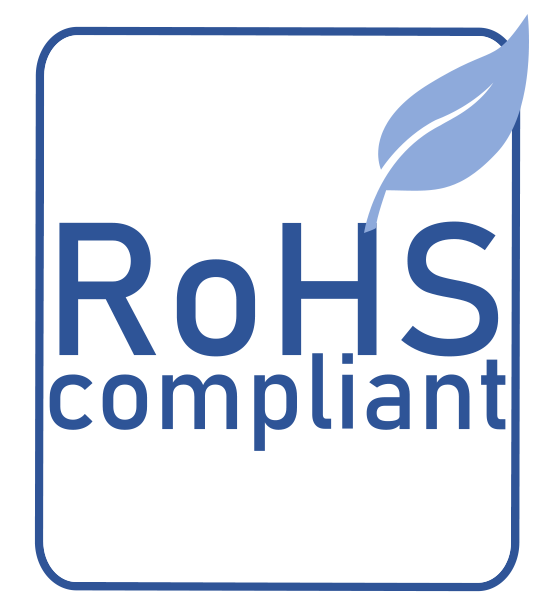RoHS – Restriction of Hazardous Substances
The material-specific requirements of the RoHS (Restriction of Hazardous Substances) regulation restrict the use of lead, cadmium, chromium (VI), mercury and brominated flame retardants in electrical equipment and electronic components. The directive requires manufacturers to provide technical documentation for assessing the RoHS conformity of electrical equipment with regard to the restriction of hazardous substances.

Since July 22, 2019 the RoHS Directive 2015/863/EU has been in force, in which a total of 10 substances must be taken into account, which must not exceed the maximum permissible concentration of 0.1 percent by weight. In addition, the CE marking directive is a mandatory component.
| Substances | Limit values |
|---|---|
| Cadmium/cadmium compounds | 0.01% by weight (100 ppm) of homogeneous materials |
| Polybrominated biphenyls (PBBs) | 0.1% by weight (1 000 ppm) of homogeneous materials |
| Polybrominated biphenyl ethers (PBDEs) | 0.1% by weight (1 000 ppm) of homogeneous materials |
| Chromium VI compounds | 0.1% by weight (1 000 ppm) of homogeneous materials |
| Lead/lead compounds | 0.1% by weight (1 000 ppm) of homogeneous materials |
| Mercury/mercury compounds | 0.1% by weight (1 000 ppm) of homogeneous materials |
| Bis(2-ethylhexyl) phthalate (DEHP) | 0.1% by weight (1 000 ppm) of homogeneous materials |
| Butyl benzyl phthalate | 0.1% by weight (1 000 ppm) of homogeneous materials |
| Dibutyl phthalate (DBP) | 0.1% by weight (1 000 ppm) of homogeneous materials |
| Diisobutyl phthalate (DIBP) | 0.1% by weight (1 000 ppm) of homogeneous materials |
Find out more about other regulations:
